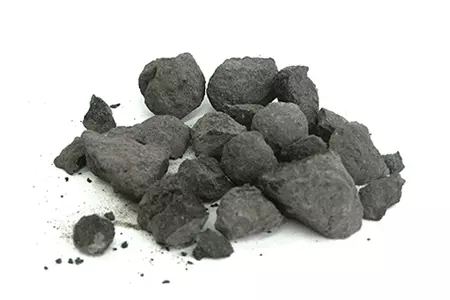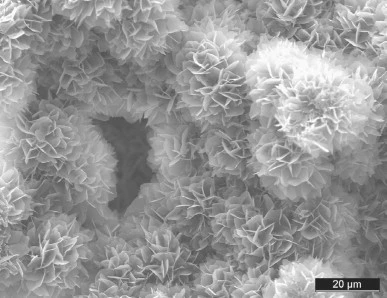Cement Manufacture and Chemistry
Oil well cement is prepared by sintering (fusing at high temperatures) fixed proportions of powdered calcareous materials (limestone, chalk, seashells, etc.) with aluminosilicates (clays) in a rotating kiln at temperatures of 1300 to 1550°C. A complex series of progressive chemical reactions take place in the kiln. The resulting material, called clinker (Figure 1), is then cooled and ground together with one or more forms of calcium sulfate, usually gypsum. The calcium sulfate prevents the cement from setting up too quickly once it is mixed with water.

In addition to these basic raw materials, other materials such as sand, bauxite (aluminum ore) and iron oxide may be added to the kiln to adjust the composition of the clinker. The properties of the final cement product are determined by its mineralogical composition.
Note that cement chemical notation is different than standard chemical notation.
| Tricalcium silicate (C3S) | Has the greatest effect on the overall compressive strength of the cement; it is also responsible for the early strength (1 to 28 days). |
| Dicalcium silicate (C2S) | This slow-reacting component accounts for the gradual gain in strength of the cement which occurs over an extended period of time. |
| Tricalcium aluminate (C3A) | Exhibits the fastest rate of hydration; the initial set and thickening time of cement, as well as the sensitivity of the set cement to sulfate-containing waters, are influenced by the concentration of this component. |
| Tetracalcium aluminoferrite (C4AF) | Hydrates rapidly at lower heat, allowing for lower kiln temperatures. |
The addition of iron oxide (Fe2O3) to the kiln favors the production of C4AF at the expense of C3A in the clinker. This procedure is used for cements that are resistant to sulfates, which can be common constituents of subsurface formation brines. Medium sulfate resistant (MSR) cement contains 3 to 8% C3A and high sulfate resistant (HSR) cement contains only up to 3% C3A.
The compounds formed in the clinker are anhydrous, and when the cement product is brought into contact with water, they form hydrated compounds. After a period of time, the hydrates form an interlocking crystalline structure (Figure 2) which is responsible for the set cement’s strength and impermeability. The formation of this structure as the cement hydrates is a very complex process.

Water in excess of that required for cement to set is necessary for the formation of a cement slurry (a suspension of solids in a continuous liquid medium) that can be pumped. After the slurry has been placed in position behind the casing and pumping has stopped, the cement begins to set under downhole conditions and much of this water filters out into the formation.
 Petro Shine The Place for Oil and Gas Professionals.
Petro Shine The Place for Oil and Gas Professionals.



